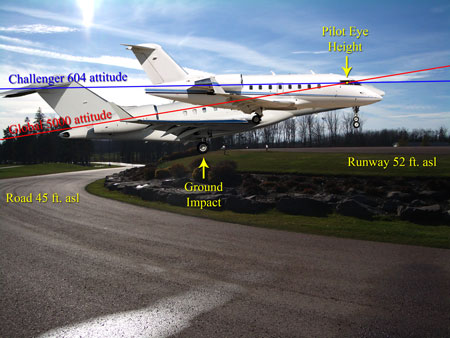I remember one time, during my training with an instructor, that I was landing at an airport. The instructor told me to ignore the VASI indicators as it was calibrated for the larger airplanes. Flying in a C172, I found that remark odd as I was under the impression that all VASI or PAPI would accommodate the C172 configuration.
I didn’t think much of it until today, a few years later, after reading an accident synopsis that indicated using the APAPI was a contributing factor to the accident.
There are three types of Visual Glide Slope Indicators (VGSIs):
- Visual Approach Slope Indicator (VASI)
- Precision Approach Path Indicator (PAPI)
- Abbreviated Precision Approach Path Indicator (APAPI)
In all cases, these tools will provide accurate guidance for the pilot to approach the runway for touchdown. However, there are differences to where the aircraft will touch down based on how the indicator was calibrated for the “eye-to-wheel height” (EWH) of the primary type of aircraft using the airport.
The EHW is the distance from the pilots eye to the base of the landing gear. This distance is important when using a VGSI to assist in the landing of the aircraft. As the EHW distance increases (as you work your way up to larger aircraft) the PAPI or VASI needs to be moved further down the runway to ensure enough landing clearance.
If you are using a VGSI for a EWH that is smaller than the aircraft you are flying, you risk of undershooting the runway.
The above photo illustrates this well. The EWH for the Global 5000 is higher than that of the Challenger 650. If following the VGSI that was calibrated for a lower EWH, the Global 5000 craft is at serious risk of landing short of the runway.
So how do you know if the VGSI for the airport you’re landing at is safe to use for your aircrafts EWH? The CFS will tell you using the following abbreviations:
Visual Approach Slope Indicator System (VASIS)
V1: 2-BAR VASIS intended to serve aircraft with an EWH up to three metres (ten feet).
V2: 2-BAR VASIS intended to serve aircraft with an EWH up to 7.5 m (25 ft).
V3: 3-BAR VASIS intended to serve wide-bodied aircraft with an EWH up to 14 m (45 ft).
AV: AVASIS intended to serve aircraft with EWH up to three metres (ten feet).
PAPI (Precision Approach Path Indicator)
P1: PAPI for aircraft with an EWH up to three metres (ten feet).
P2: PAPI for aircraft with an EWH up to 7.5 m (25 ft).
P3: PAPI for aircraft with an EWH up to 14 m (45 ft).
AP: APAPI for aircraft with an EWH up to three metres (ten feet).
Going back to the original question. Was my C172 safe to use the VGSI at the airport that I was landing at? The answer is yes. Although the VGSI could have been calibrated for larger aircraft, it still would have given me safe guidance to the runway. The key wording in the above list is “up to”. Using a PAPI indicated as “P3” in the CFS would have been safe for a C172 pilot to use.
If you would like more information on how to read a PAPI or VASI, check out section AGA 7.6 of the AIM.
Update: Sulako posted this video of his approach into YYZ. If you skip to 3:50 seconds you will see the PAPI in use at Pearson on the left hand side of the runway. They are a series of 4 lights in a horizontal row, two white, and two red.



